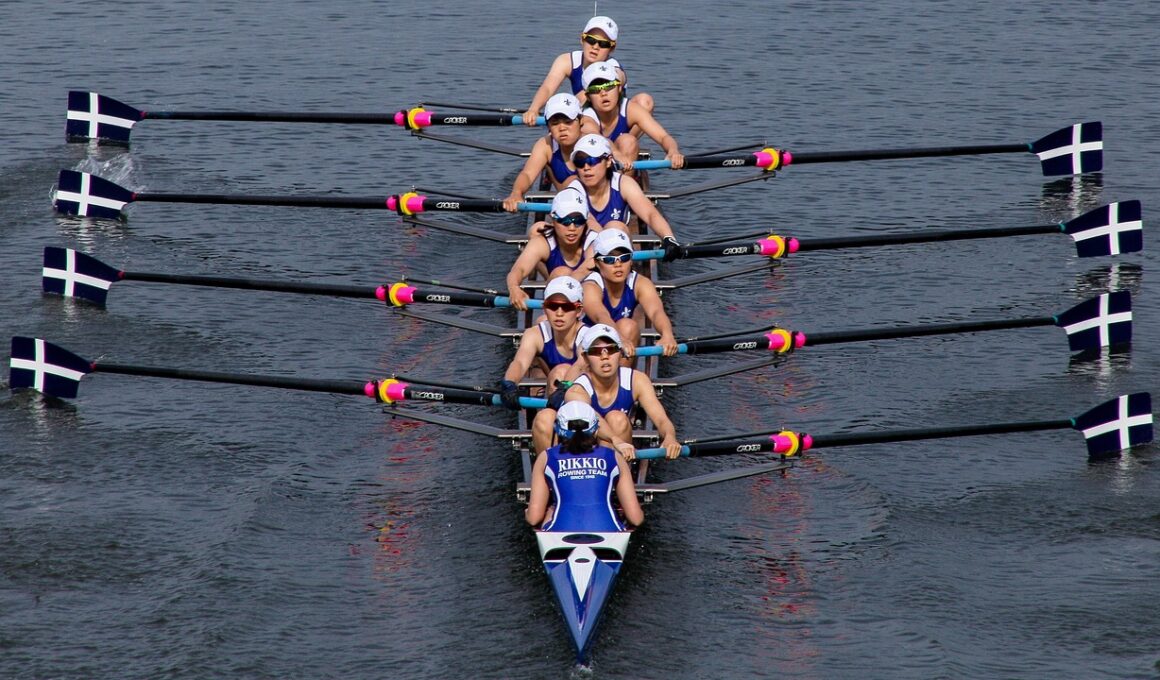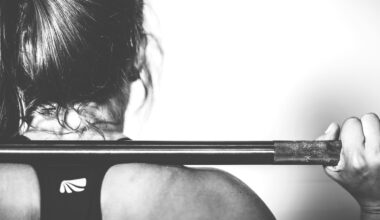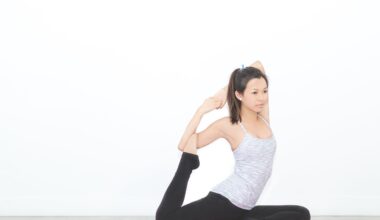Editing Rowing Photos to Highlight Water and Motion
Editing rowing photos requires an eye for detail, especially when it comes to showcasing the dynamic elements of water and motion. First, focus on the lighting in the image. Adjusting the exposure is vital to make the water glisten, enhancing its reflective properties. Brightening shadows can reveal hidden details in both the boat and the rowers. Utilize contrast adjustments to emphasize the ripples and waves created by the oars. Next, consider the cropping of your images. Cropping can eliminate distractions and center the viewer’s focus on the action. Frame the subject tightly to showcase the intensity of competition. Also, removing unnecessary elements from the background can make your subject pop out even more. Color saturation is another important factor. Boosting the blues and greens in your photos can create a vibrant, lively atmosphere. Delve into sharpening edges to give your subjects a crisp, defined appearance against the flowing water. A great photo captures energy, so experiment with various editing techniques. Layering and blending can add depth, creating a more visually captivating composition. Lastly, always remember to save your images in high resolution for the ultimate presentation.
Next, utilize the power of filters and effects in your editing software to highlight motion. Filters can create simulated motion blur that emphasizes speed and action without detracting from the primary focus of the photo. Carefully balance the use of these effects; overdoing can create disorientation within the image. Balance is crucial when editing and retaining a natural appearance in your rowing photos. You may wish to blend certain elements like water splashes to enhance the authenticity of the scene. Adjust hues and saturation levels to bring out the vibrancy of the scene. Remember, each rowing event captures a unique atmosphere depending on the time of day and weather, so the editing should resonate with that environment. Consider the story you’re trying to tell through your photographs. Are you capturing competition, teamwork or the serene beauty of rowing? Tailor your edits accordingly to resonate with that narrative. Incorporating textual elements into your edits can also provide context. For instance, adding the name of the event or team can create a more engaging visual story. Experiment with the placement of text to ensure it complements rather than distracts from the photo.
In the realm of rowing event photography, using tools like Adobe Lightroom or Photoshop can deliver exceptional results. These platforms provide a vast array of features to refine your images effectively. Use the graduated filter tool to enhance only parts of your image, such as the water surface or the background trees, without affecting the entire photo. This technique can draw attention precisely where you want it. The adjustment brush is another valuable tool, as it allows you to selectively lighten or darken areas, adding dimension. For instance, lighten the rowers’ faces while deepening the colors of the water. Using actions or presets is efficient, especially for batch editing, enabling a consistent look across your photographs. Also, consider the importance of color grading. It involves altering the color palette of your photo to match the emotion or mood you want to convey. Sepia tones might add warmth and nostalgia, while cooler tones emphasize precision and competitiveness. After editing, review your images on different devices to ensure consistency in appearance. Always keep your original files intact to revert back if necessary.
Another vital aspect of editing rowing photos involves understanding composition rules and how they translate into post-production. The rule of thirds is an essential guideline; place horizon lines along these lines to create more dynamic shots. Utilize leading lines, such as the path the boat takes or the direction of the oars, to guide viewers’ eyes throughout the photograph. During post-processing, maintaining these compositional dynamics can enhance the viewer’s experience. Additionally, layering elements like water reflections can add an intriguing dimension to your images. Don’t hesitate to explore various exposure techniques during editing to enhance the scene’s authenticity. A versatile approach to underexposing or overexposing certain elements can produce compelling visuals that grip the viewer’s attention. Experiment with different saturation levels too. Bringing warmth into the predominantly cool colors of water can result in a captivating contrast. Emphasizing the emotions on the rowers’ faces through adjustments can communicate intensity and dedication. Alongside these techniques, flipping the images can sometimes yield surprising new perspectives. The perfect balance of careful adjustments can create stunning masterpieces.
Final Touches and Exporting
When it comes to final touches, sharpening and noise reduction play crucial roles in preparing your rowing photos for sharing. After completing broad edits, applying a sharpening algorithm can enhance detail clarity, especially for distant elements. Excess noise, especially in low-light conditions, can be distracting. Use noise reduction filters carefully to smooth out any graininess while retaining image detail. Next, ensure to assess color accuracy. Review your edited photos under different lighting to confirm that colors appear natural and appealing. If necessary, perform color correction adjustments before exporting. Once satisfied with the edits, it’s essential to select the right file format. JPEG is standard for online sharing, but for prints, consider lossless formats like TIFF for optimal quality. When exporting, choose appropriate resolutions based on the intended use; lower resolutions work well for web sharing, while higher resolutions are suited for prints. Always create backups of your edited files and originals. Share your work on platforms like social media or photography websites. Gaining feedback from peers can provide valuable insights into your progress.
After sharing your edited rowing photos, take some time for reflective analysis. Reviewing your work can provide insight into your editing techniques and how they contribute to your overall style. Ask yourself questions about what worked, what didn’t, and why particular edits captured emotions effectively. This reflective practice can aid in developing sharper skills and refining your approach for future photography sessions. Engaging with fellow photographers online or in community groups can also facilitate learning. Sharing experiences and techniques can expose you to fresh ideas and editing methodologies you may not have considered. It’s essential to remain curious and continue exploring advanced techniques in the editing process. Follow tutorials or participate in webinars that focus on photo editing best practices. An investment in ongoing education will broaden your skill set and lead to continual improvement. Your unique style will evolve as you experiment with new features and techniques. In rowing photography, honing the ability to capture movement is not just about skill; it is about feeling the energy and excitement of the sport. Ultimately, continuous learning will enhance your artistry.
As we conclude this exploration of editing rowing photos, remember that the ultimate aim is to create powerful images that tell stories. Exceptional photography invites viewers to experience the sport in a way that is immersive and emotional. When you edit, focus on highlighting the singer’s key aspects like water dynamics, motion, and athlete expressions, creating a connection. Pay attention to details while ensuring that the essence of rowing remains intact; it is about their determination, teamwork, and the relentless pursuit of excellence. Balance your creativity with technical skills to achieve this goal. Regularly assess both your photography and editing processes. Analyzing your progress will not only bolster your confidence but also accelerate your development. Embrace feedback, reflection, and change as they are essential parts of any artistic journey. Keep experimenting with various editing tools and techniques. The world of rowing photography is vast and full of potential for expressing art, passion, and adrenaline on water. Stay dedicated to capturing the best moments in rowing events and trust your creative vision. This balance ultimately allows for the personal touch that can resonate with audiences.


